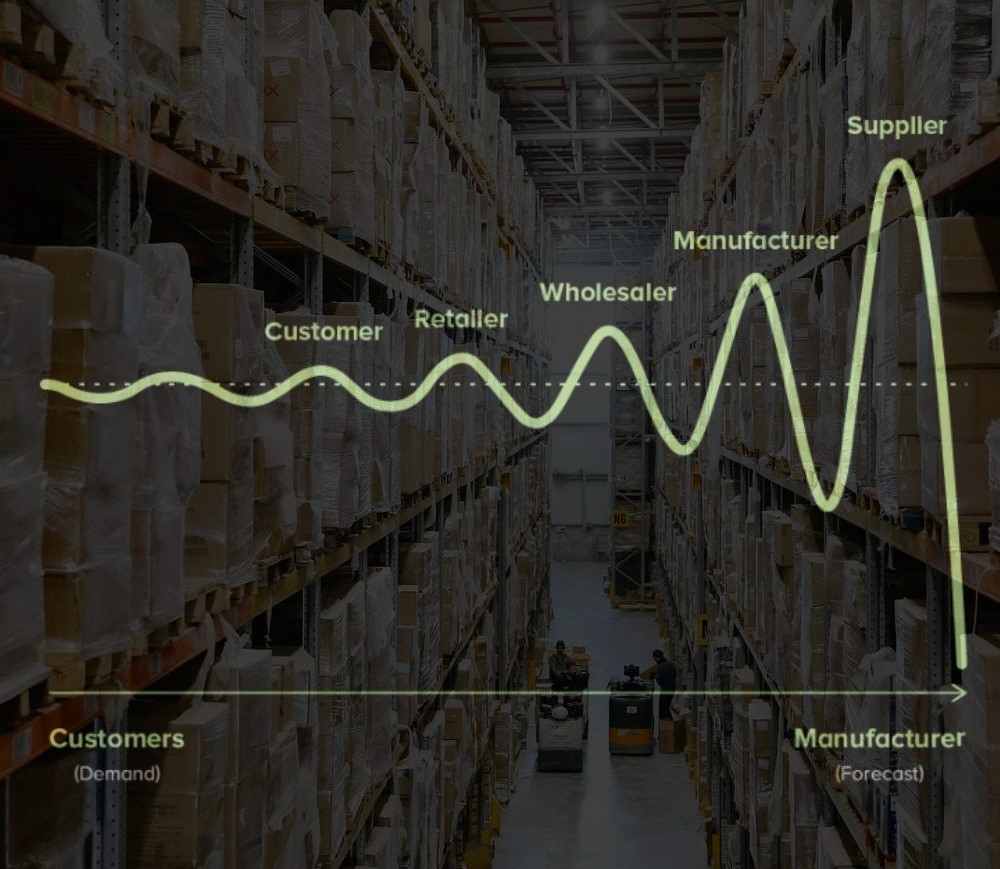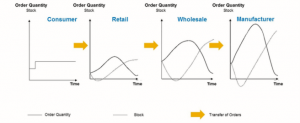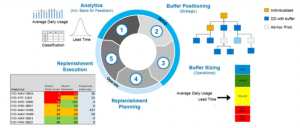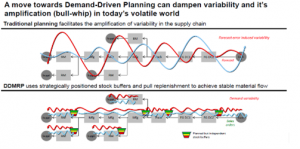
20 Apr What is the bullwhip effect in supply chain and how can SAP S/4HANA reduce it
Reading time: 2 min
Keywords: Bullwhip effect, SAP, S/4HANA
Authors: Panagiota Vasila
Now, during the COVID19 pandemic, the consumers’ demand for products has altered. This phenomenon caused fluctuations in the time series used for inventory planning, across all the supply chain, because everyone tries to protect themselves from stock-out situations and missed customer orders, by keeping extra inventory. This phenomenon is called “the bullwhip effect”.
“The bullwhip effect was named by analogy with the way in which the amplitude of a whip increases down its length, the further from the originating signal, the greater the distortion of the wave pattern. In a similar manner, forecast accuracy decreases as one moves upstream along the supply chain.”
A simple Example
Let’s take an example of the Bullwhip Effect: The actual demand of customer-consumer is 5 units. The retail then orders 8 units from the distributor; the extra 3 units are both for safety stock and customer satisfaction reasons. The distributor then orders from the manufacturer 15 Units (keeping a few units in mind). So at last manufacturer also places a huge raw material order -30 Units- anticipating high sales in future!
Finally, there are 30 units manufactured for something that has a demand of 8.

Bullwhip Effect during COVID period
In the coronavirus era, images of empty store shelves have triggered more panic buying. The panic buyers create “false demand”, contributing to a whole slew of bullwhip effect problems further up the supply chain. For example, as fear mounts around COVID-19, global delivery times are the longest they’ve been in almost ten years while manufacturers, distributors, and retailers are struggling to keep up with stock-outs and rising demand.
Without real-time demand data and end-to-end visibility across the entire supply chain, retailers simply can’t maintain steady inventory, at least at the speed required.
Causes
Demand forecast updating: Members of the supply chain updating their demand forecasting
Order batching: Members of the supply chain rounding up or down the number of orders
Price fluctuations: Usually driven by discounting resulting in larger quantities of purchases
Rationing and gaming: Buyers and sellers delivering over or under their order quantities
How to reduce the bullwhip effect with S/4HANA
With Demand Driven MRP we can reduce the bullwhip phenomenon. Basic ideas behind the demand-driven replenishment process:
- Permanently optimize the process flow
- Produce only real demand.
- Dampen variability by decoupling with inventory buffers.
- Work event-driven
- Provide real-time prioritization based on demand.
- Empower teams to make local decisions.
The planned end to end process flow in S/4HANA consists of the following five steps of DDMRP methodology:
1. Analytics
2. Buffer positioning
3. Buffer sizing
4. Replenishment planning
5. Replenishment execution

New IBP for Demand-Driven Replenishment
To support Demand-Driven MRP, a new application called IBP for Demand-Driven Replenishment was launched in IBP’s 1905 release. It includes steps 1-5 natively in a new SAP IBP planning area with integration into SAP ERP. The SAP Integrated Business Planning for inventory features related to Demand-Driven MRP moved into the new application from 1908.

The basic characteristics of IBR are:
- Average Daily Usage (ADU) Calculation
- Strategic Inventory Positioning
- Buffer Planning & Adjustment
- Create replenishment Proposals and Orders
- Project On hand Stock and Review Historical performance
- What if Analysis
- Excel Templates and Embedded Analytics
Summary
Based on the fear for stock-out situations and missed customer orders, even a small change in customers’ behavior, can cause big fluctuations in inventory management especially as one moves further up the supply chain. With S/4HANA and the new feature of IBP for Demand-Driven Replenishment, this bullwhip effect can be minimized. For more information, you can always reach the IT-TELESIS team.
References
SAP Learning Hub



